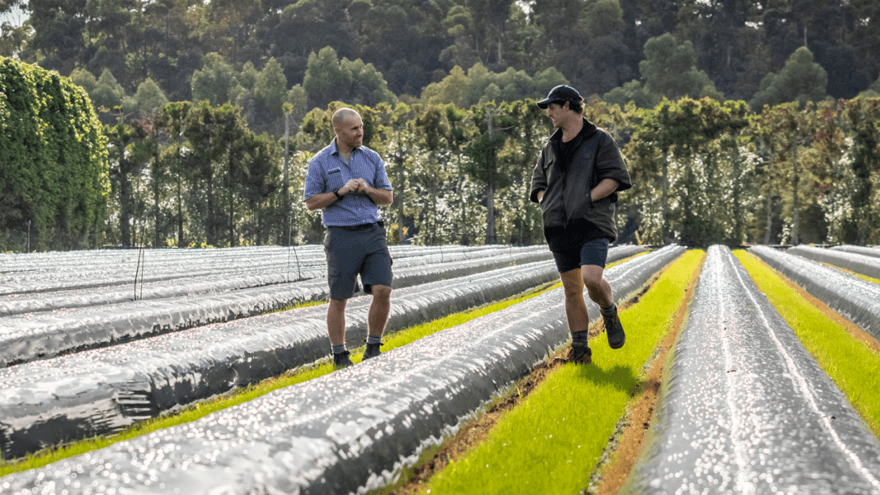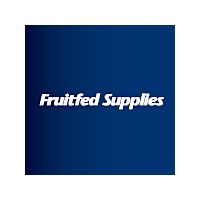
Grass inter-row suits bountiful berries
When leather rot caused the loss of more than half their strawberry crop two seasons ago, Matt Ashby from Matakana Berry Co knew they needed to change their growing processes.
Matt’s parents, Grant and Lynda, began a small strawberry growing operation in Albany, north of Auckland, in the early 1990s before Matt was born. The strawberry fields got larger as leased land was planted. In time, the Ashbys moved out to Coatesville but residential development pressures continued to impact their growth, even with the support of Matt and his sister Tashi who joined their parents’ business once they’d finished school.
“About five years ago,” Matt says, “the grower who established this Matakana property called Dad, saying he’d heard we were looking for a farm and we bought it. Strawberries have been grown here on the Omaha Flats for about 15 years and before that, persimmons. We continued to grow as we had been in Coatesville with straw laid between the raised polythene mounds, but it wasn’t working in the different soil and warmer conditions.”
The peaty Omaha soil overlaid with straw became boggy in winter with water unable to drain away efficiently. Populations of Phytophthora cactorum built up, causing severe leather rot, blight and leaf spot pressure. More rain during a wet season spread the disease onto plants and the resultant crop losses were part of Grant’s decision to step aside for Matt to manage the operation alongside Lynda, who looks after labour and packing.
Matt had seen the idea to sow grass between rows in Australia. “The conditions were different there, but I wanted to try it. I called William, our Fruitfed Supplies Representative, to order grass seed, opting for a less expensive annual ryegrass over 70% of the property that first year. It wasn’t perfect but showed we were on the right track with the concept.”
First among the benefits of using grass between the strawberry mounds was no leather rot. “A big tick!”
The grass roots added structure and water-holding capacity to the inter-row area, allowing the tractor to be used during wetter winter months, something that had not been possible with straw. The labour saving of not having to rely on five or six people and knapsack sprayers for the winter crop protection programme was considerable.
They saved over $100,000 in straw purchase and labour costs of spreading it, although this saving is countered to some extent by grass seed and sowing costs.
“It’s better to work in the rows with grass once we start harvesting,” Matt adds. “Straw used to move and clump up under trolley wheels. Our drains used to fill up with soil and straw, but that’s all stopped.”
Concerns that the berry crop might be affected by not having the light reflecting properties of straw were unfounded. “Production isn’t impacted, nor are the brix. Plus the grass looks fantastic!”
Matt’s process is to start afresh every year, pulling out all grass, polythene and mounds at the end of the season. Once paddocks are fumigated, re-laid with mounds and polythene, grass is sown right away using an effective homemade seeder fitted to the front of the tractor. Once established, the grass inter-rows are mown with small self-propelled hand mowers every two to three weeks. Matt has found fescue works best in their drier soils and perennial ryegrass in the wetter paddocks.
He trialled other options to straw, such as laying Extenday reflective groundcover, but the peat soils came through the cloth which became as black as the soil within three or four weeks. This also created excellent conditions for Phytophthora to thrive.
Matt says his focus is now on early market strawberries. “Our soils can be up to six degrees warmer than Auckland at times. After the challenges of getting our crop picked last season due to the lack of staff, we don’t want to risk getting Recognised Seasonal Employer (RSE) workers this year so have cut our planted area in half to focus on the early varieties. There’s a much smaller area going into later varieties for pick-your-own which is popular here.”
Helensville-based Technical Horticultural Representative William Moss has a key role to play in the Ashbys’ ever-evolving, quality-focused operation.
“William is awesome. He does all our soil tests and is going to do leaf tests every two weeks during the growing season. He advises and supplies fertilisers and sprays, having gained a good understanding of our business from Craig Lamb who was our Rep for many years and is still a good friend of Dad’s. We still use Craig’s winter mite programme which is solid. William helps us out wherever he can, and it’s great to know he’s up here every Tuesday and Thursday. He knows how much we are always trying to improve and love tracking all kinds of data on spreadsheets so we can compare each season to the next.”
Another example of this desire to improve was the decision to reduce certain nutrient applications via fertigation and, instead, to use foliar fertilisers to supplement the plants’ nutritional needs. Leaf tests showed plants were taking up too much calcium and nitrogen through fertigation, which created large, lush plants which didn’t produce many flowers or fruit. Now, the application of appropriate rates of foliar potassium and magnesium are delivering improved yields – just one of several components of his business Matt Ashby will be tracking this season.



